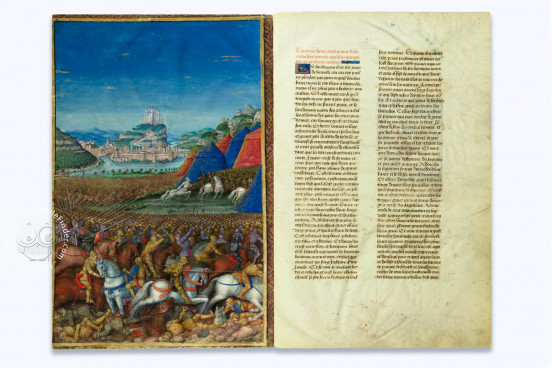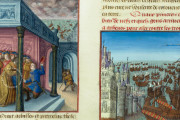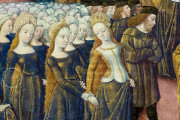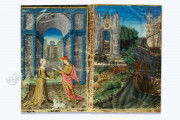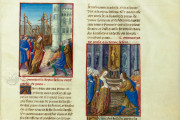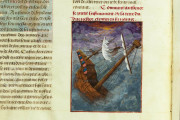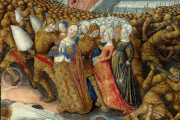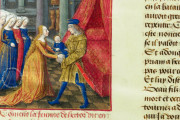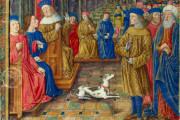The Sicilian poet Guido delle Colonne (1210-1287) wrote the History of the Trojan War in Latin taking inspiration from Dares Phyrgius, who wrote a text on the War of Troy. He was also inspired by Dictys Cretensis, the legendary companion of Idomeneus during the Trojan War, and the claimed author of a diary of its events. The text composed by Guido delle Colonne begins with the legend of Jason and the Argonauts, ending with the entrance of the Greek heroes after the destruction of Troy and the death of Ulysses.
In the fifteenth century, an anonymous writer translated Guido delle Colonne’s work in French. This manuscript, kept in the Bibliothèque Nationale in Paris, contains the French text embellished with lavish full-page miniatures.
Guido delle Colonne’s History of the Trojan War in a Lavish Manuscript in Paris
This manuscript was made for Aymar of Poitiers around 1500. The heraldry of Aymar of Poitier appears in the book (fol. 1v) as evidence of his original ownership. After Aymar’s death in 1501, his family gave the book to the Abbey of Saint Germain des Prés, where it stayed up to the French Revolution.
17 full-page illuminations illustrate the manuscripts. The miniatures represent Jason and Medea (fol. 1v), Priamo, king of Troy (fol. 7r), Antenor’s shipwreck (fol. 8v), Paris and Helen (fol. 11r), Castor and Pollux (fol.13r), Achilles and Patroclus (fol. 14r), Ulysses, Hector, Menelaus, Agamemnon and the other figures of the epic poem.
Events not included in the Homeric poem are featured in this manuscript. This means that this book enriched the Homeric version with different traditions, and thus interpreted the narrative in an original work.
Jean Colombe’s Workshop Illuminated the History of the Trojan War
The illuminations were painted in Jean Colombe’s workshop. Jean Colombe was one of the most productive French illuminators of the fifteenth century and in the last quarter of the century he maintained a large workshop, where his sons François and Philibert were educated.
It is difficult to define how many painters were working on this manuscript. It is certain that the decoration is to be attributed to Colombe's workshop because the book bears the hidden signature of François Colombe (fol. 11).
The miniatures are remarkable because of the reception of Renaissance architecture and the representation of large spaces. Widely inspired by models of Roman antiquity, the illuminations of the History of the Trojan War maintain the crowded and dynamic compositions of Jean Colombe’s style.
We have 1 facsimile edition of the manuscript "History of the Trojan War": Histoire de la Destruction de Troie la Grand facsimile edition, published by Club Bibliófilo Versol, 2013
Request Info / Price
